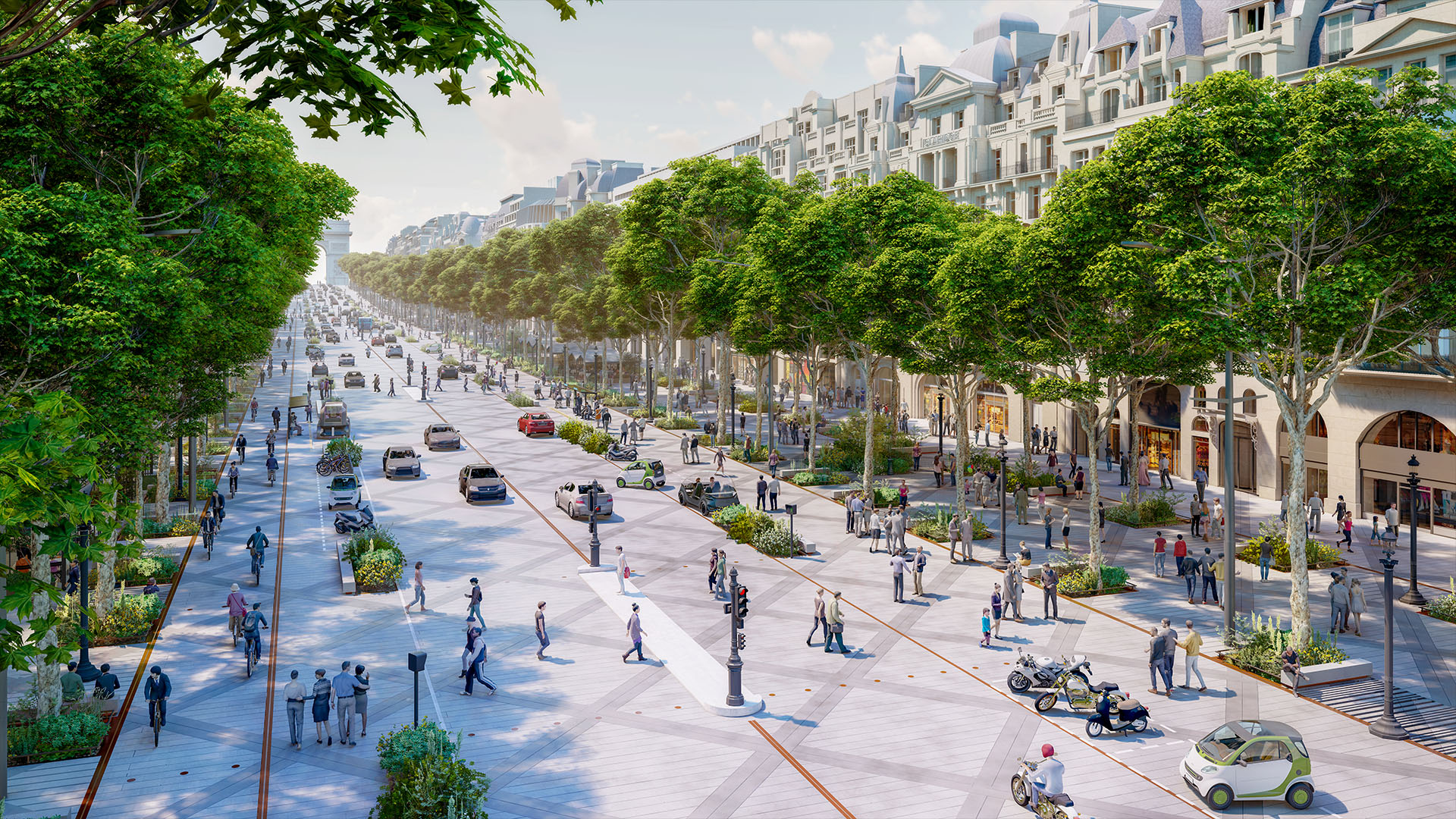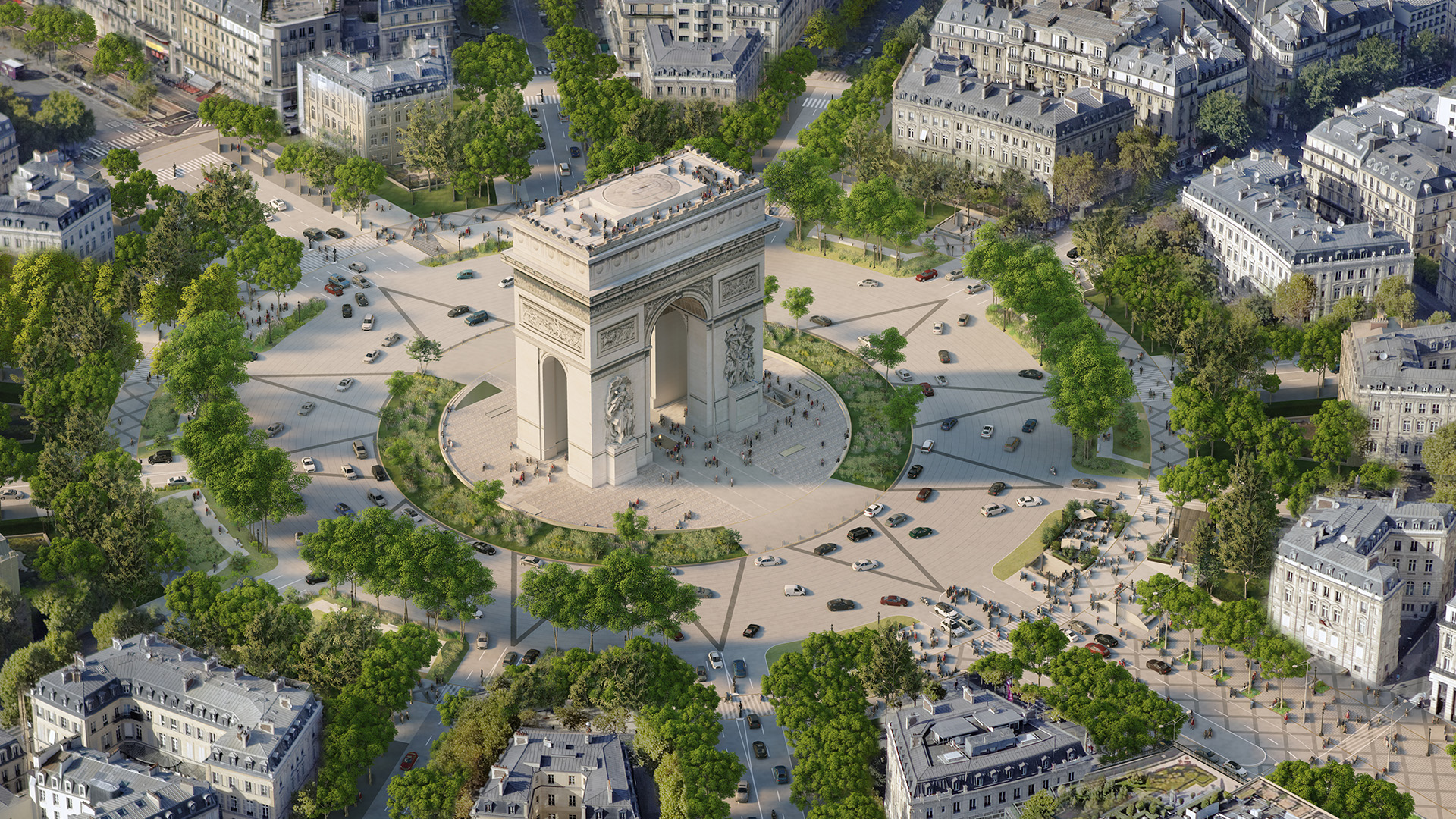There is a video of Paris on YouTube in which cyclists glide carefree, through the city’s streets on dedicated cycle lanes.
To the delight of many, the same video also shows a sample of drivers, all caught in gridlock, sitting hunchbacked and hollow-eyed as they decry the congestion they must endure. As with many people sitting in traffic, the drivers believe that it is the other people causing traffic jams, not them.
It’s a beguiling picture of a city that, perhaps more than any other over the past decade, has pursued the goal of becoming car-free. Its mayor, Anne Hidalgo, has pledged to make Paris entirely cyclable by 2026. She has already tempted enough people from their cars that there are now more than one million Parisians using their bicycles daily.
Perhaps this only tells half the story though: as the drivers in the video have discovered, the freedom enjoyed by Paris’s cyclists is a price that motorists have had to pay. Hidalgo has built the huge network of cycle lanes that span the city – up to 1,000km by some estimates in a city that only had 5km-worth in the 1990s – by taking space from roads that had been dominated by cars. No wonder so many have decided that driving just isn’t worth the effort.
“We need to learn from places like Paris,” says Hirra Khan Adeogun, head of car-free cities at the UK-based charity, Possible, which campaigns for a zero-carbon society. “People thought it couldn’t happen in a city of that size.”
Over the past few years, the benefits of reducing or even eliminating traffic have expanded beyond cleaner air. More cohesive neighbourhoods, safer environments thanks to fewer traffic accidents and improved equality (poorer people have lower car ownership and are therefore unable to access some economic opportunities) are all talked about now. One clean air campaigner who wished to remain anonymous says she believes that driving a car will become “the new smoking”.
Carrot or stick?
Reaching this goal is not straightforward though. Khan Adeogun is realistic that, just as in Paris, achieving this requires not only the carrot for those who cycle or take public transport, but a certain amount of stick for those who remain in their cars. This might take the form of congestion charging, which has become a feature of cities from San Diego to Singapore, or, as in London, an ‘ultra-low emission zone’ (ULEZ) which charges the more polluting vehicles for entering it. Some cities, such as Oslo, have restricted private vehicles from streets in the city centre. Many have removed parking spaces.
All these measures created controversy at the time of their introduction (and some cities have abandoned traffic restriction proposals because of the political furore that has been stoked). “When you try to change people’s driving patterns, the fear of change is very different to the experience of what actually happens,” says Andrew Simms, co-founder of UK think tank, the New Weather Institute and author of Car Free Stories. “There’s a pattern of local consultation followed by backlash, but then the fears don’t materialise and people adapt.”
He cites the example of Stockholm which, in 2006, introduced a congestion levy, a much-contested charge for its city centre, for a seven-month trial period. At the end of the trial, there was a referendum in which the majority of residents (54%), having seen the benefits, voted in favour of it and it has been a permanent feature since 2007, its popularity growing over the years.
Four steps to reducing car journeys
Simms believes there are four essential measures to achieving lower car use. First, the provision of a safe cycling infrastructure with separated bike lanes and secure bike storage. Second, the removal of parking places and road closures. Third, financial incentives for ‘active travel’ and disincentives for private car journeys. Fourth, reliable, cheap public transport.
Like many environmentalists, he regards the pandemic as having had some positive aspects in that it allowed populations to experience low traffic and remote working, concepts that had previously been dismissed as unrealistic. “People now know there will be health and wellbeing benefits to changing,” he says. “But there’s a bump in the road that you have to get past first.”
Despite this bump, cities from Medellin to Milan are trying to reduce their residents’ reliance on private cars. Even Delhi, a city so polluted that visibility can be compromised, and where up to 30,000 people a year are killed on its roads, has taken measures to reduce traffic by implementing bans on certain diesel vehicles as well as ‘road rationing’.

Vision of the Champs-Élysées in 2030. Photo by PCA-STREAM
“Fear of change is very different to the experience of what actually happens” Andrew Simms, the New Weather Institute
Different routes to car reduction
Road rationing: widely used going back as far as the late 1980s, this method allows cars with even-number registration plates in on the roads on alternate days, odd-number registrations on others. However, while it initially worked in Mexico City and reduced pollution, wealthier residents got around the restrictions by buying an extra car.
Vision Zero: aimed at reducing car-related fatalities through street design, and by reducing speed limits and parking spaces – Vision Zero encourages drivers to choose other forms of transport. Its implementation resulted in no traffic-related deaths in Oslo and Helsinki in 2019.
Financial incentives: California, home to LA and San Francisco, two of US’s most congested cities, is currently debating rewarding car-free low earners with a $1,000 tax credit.
Reduced parking: making it very difficult to find a parking space by drastically reducing spaces (Paris and many other cities) or making them prohibitively expensive (London and New York) deters people from travelling in.
There is, however, a notable regional exception in the push to reclaim the roads: North America has an ongoing love affair with cars, sometimes coupled with a disdain for public transport which is often depicted as crime-ridden and dangerous.
Its cities were designed around car ownership. This, combined with a tendency for families to move out to the suburbs but work in city centres, has meant traffic in cities such as Los Angeles, Atlanta, Vancouver and Chicago is generally at a standstill during rush hour. That said, certain parts of the US are now embracing the 15-minute city concept, which could in theory make cars redundant in day-to-day life.
Heather Grey-Wolf works for Infrastructure Ontario and has taken more of a carrot than stick approach to managing people out of their cars in Toronto. “In Canada, we have 400,000 immigrants arriving each year and Toronto is growing at an increasing pace,” she says. “We feel that one of the keys to the successful management of that is transit.”
New development in the city, she explains, is focused on high-density housing built close to transit hubs, with little car parking provision (although, recent by-laws mandate for bicycle parking). “We want to locate people so that they can live car-free,” she says. “The stick becomes the cost and time involved in commuting but, in the meantime, you have to make public transport easy and accessible.”
Cheaper public transport
Affordability is also crucial. Over the past year, countries such as Spain and Germany have experimented with getting people back onto public transport, post-pandemic, by offering very reduced or even free travel. Germany’s trial was for just three months but saw a large increase in train journeys. In Spain, the scheme is regarded as such a success, it has been extended until the end of 2023. Malta has now joined them, offering citizens free travel over the island. Tallinn in Estonia has been offering residents free travel since 2011.
Getting rid of cars completely is unlikely, but, in cities especially, the able-bodied should be using them exceptionally rather than by default. Khan Adeogun suggests that road pricing would be the fairest way to go about this: “I’d like to see a pay-as-you-drive scheme that would take into account the emissions of the car, and the location of the driver” – someone living rurally, for example, would pay less than someone who has a lot of public transport choices.
Who knows, perhaps there will come a time when traffic congestion won’t be seen as a negative but something to be celebrated. It is, after all, a very effective way of persuading people out of their cars.
“We want to locate people so that they can live car-free” Heather Grey-Wolf, Infrastructure Ontario

